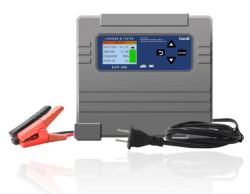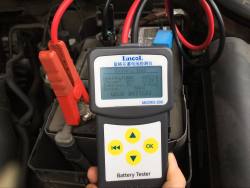Lead Acid Car Battery Maintenance(1)
2018-09-06
Battery and Cell
A lead acid battery is composed of array of cells. This array of cells is known as Battery. A 12 volt Mono block battery has 6 cells (each gives 2 volts) but a 2 volt tubular battery has only one cell.
The capacity of the battery to store charge is expressed in terms of Ampere hours (Ah). One Ah = 3600 coulombs. 1 Ah battery can provide 1 ampere current in 1 hour. The 100 Ah tubular battery used in Inverters can give 1 ampere current for 100 hours. Battery rating is based on the constant discharge rate for a particular time; say 10 hours, till the terminal voltage reduces to minimum. Typically a 100 Ah battery gives 5 ampere discharging current for 20 hours. During charging, the energy from the external power source causes the chemical changes in a reverse manner so that battery regains its charge.
Battery cycle
One complete discharge and recharge forms a battery cycle. This cycle is usually a discharge from 100 % to 20 % change followed by recharging from 20 % to100 %. Life of the battery depends on the number of deep cycles per day. For example, if a battery is discharged 50 % per day and recharged to 100 %, its life increase to twice than a battery discharging and recharging occasionally. Therefore it is better to discharge and recharge emergency lamp battery and inverter battery daily to increase its life. It is also better to start vehicles daily even if it is not running. This prevents self discharge and increases the efficiency for cycling.
Self discharge
If the lead acid battery is not discharging through the load, self discharge takes place @ 4 % per week at 27 degree. For example, a 125 Ah battery shows self discharge @ 5 Amps current per week if it is not discharging through the Inverter.
Battery equalization
All the cells in the battery will not be equally good due to aging. The aging process starts at the moment the battery leaves the manufacturing factory. Some cells accept charge very fast and some in a slow rate. If this happens, the battery will not hold sufficient charge and will discharge very fast through the load. To prevent this and to charge all the cells equally, the equalization method is used. Equalization is done by giving slight overcharge to the battery even after the terminal voltage rises to maximum. Due to this overcharging, the weaker cells also get time to accept full charge. A fully charged 12 volt lead acid battery will show 13.8 V terminal voltage and a 12 V tubular battery will show 14.8 V in the fully charged state.





